Back to Sidestreet Bannerworks
Click here to find out how your engine can be featured!
.

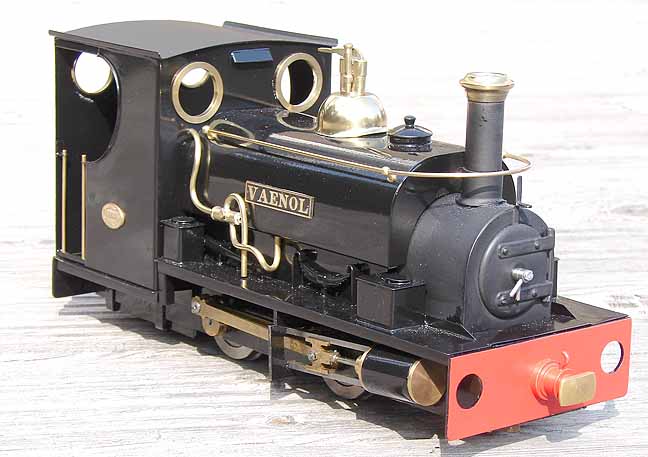
Vaenol
by Keith Skillicorn
Southport, England
Photos by the author
July, 2010
The loco is based on the mills or tramroad locomotives built for Dinorwic quarry in north Wales by Hunslet. They where the largest engines to work there.
The first of the pair of locomotives was named Vaenol, built in 1898. A sister locomotive, called Port Dinorwic, was purchased three years later. Both names where changed after a few years service. Vaenol became Gerry M and Port Dinorwic became Cackler. Both locos are preserved and Gerry M can be seen in steam at Hollycombe in the UK.
Background to the model
Robin Gosling built these chassis/boiler units in the early 1980s. It was billed as a low-cost way of building your own 16mm-scale locomotive, but with most of the hard work done. You just had to build a body around the chassis.
This particular one originally belonged to my good friend Frank Howell, who had it from new. Frank built a freelance body for it, which looked fine. However, the dimensions are pretty much scale for you to build something along the lines of Gerry M, Cackler or even Lilla, another Hunslet of similar size.
Last year I had the good fortune to meet Ken Best of Kenversions fame (he used to build drop on bodies for Mamods in the 1980s). Ken agreed to make a new body as I imagine Robin Gosling had intended. The result was Vaenol.
The model described
The loco is externally meths fired with a three-wick burner underneath the boiler. The meths tank is located under the cab floor. There are two outside cylinders with inside slide valves controlled by slip-eccentric valve gear. The cylinders are correctly profiled, with the outer surfaces having proper, separate wrappers. There is a dead-leg lubricator situated behind the front buffer beam. Boiler fittings include a regulator, water-level plug, and safety valve. There are no pressure or water gauges.
The loco is surprisingly light at four pounds dry. The track gauge, which is not adjustable, is 32mm.
The loco, being externally meths fired, vents through the rear of the saddle tank into the cab. There seems to be enough gas flow to make sufficient steam and not get so hot as to burn the paint off! The drop-on body has a goodly amount of detail, with such things as the dummy safety valves, springs, and injectors all being hand made. The only “off the shelf” items are the steam dome and the spectacle plates. Lamp irons are fitted to both the front & rear.
The livery is unlined “Improved Engine Red”! OK then, black. This was chosen because it was felt that if the engine were to be painted in the “Midland Railway Red” of the Dinorwic quarry it would quickly become discoloured.
The run
I first removed the body to service the loco for running. I then oiled round the moving parts with steam oil. I find that, particularly with this type of loco, the oil needs to be fairly heavy to have a chance of staying on the bearing surfaces when the temperature gets as high as it inevitably does.
The dead-leg lubricator was filled with heavy-grade steam oil. Next I filled the boiler with warm water, pre-heated in the microwave oven. I tend to do this to speed the steaming-up process.
The meths tank was next on the list and once this was full the wicks were lit. When all three wicks were steadily burning, the body was then dropped back on. Steam was raised in about three minutes. This can vary, depending how hot the water is initially! When the safety valve lifted was time to clear the condensate from the cylinders. A little light pushing with the regulator cracked open did the trick. With a full boiler, I let her do a full circuit (about 80 yards) before I attached the train and topped up the meths tank.
The train consisted of four Archangel bogie coaches and a four-wheel van -- quite a heavy load but very free running.
The loco wanted to get going now, so I gently opened the regulator about an eighth of a turn and she's away. Chuffing steadily around at scale speed is no problem. However if you open her up too much to start off with, she can become a racehorse. Better to just crack open the regulator and give her a shove rather than opening up to much initially so she gathers too much speed.
The run lasted for about 25 minutes before the meths started to run out. You can tell this because running becomes sluggish, as the first wick back from the chimney always goes out first and steam production diminishes. I got another circuit out of her before the rest of the wicks went out though. There was still water in the boiler but I wouldn't risk running it dry. There is no water gauge to rely on and I know from experience that I should refill if I want to continue.
Conclusion
I am very pleased with this little loco; it's relatively basic but looks the part. It is also a good performer.
Here's a movie of Vaenol in action.
If, for some reason, you can't view it, click here.
|
|
|
| Builder | Robin Gosling with body work by Ken Best |
| Date built | 1983 (approx.) |
| Gauge | 32 mm (gauge 0) |
| Scale | 16mm |
| Boiler | Pot |
| Fittings | Steam Regulator, Safety Valve, level plug |
| Fuel | Methylated spirit |
| Blow-off pressure | 60 psi |
| Cylinders | Two, double-acting slide-valve |
| Reversing gear | Slip eccentrics |
| Lubricator | Displacement |
| Dimensions | Wheelbase, 72mm; length over buffers, 291mm; height to top of chimney, 135mm; overall width, 94mm |
| Weight | 4 lbs. |

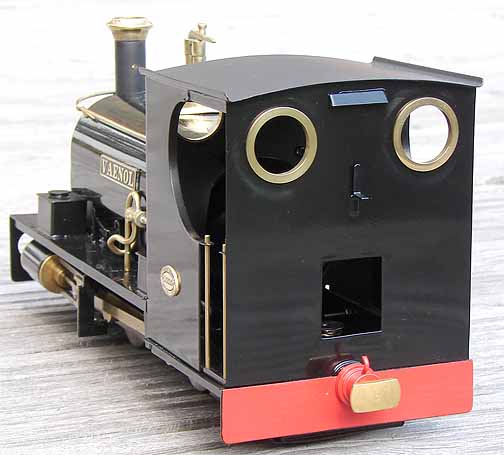

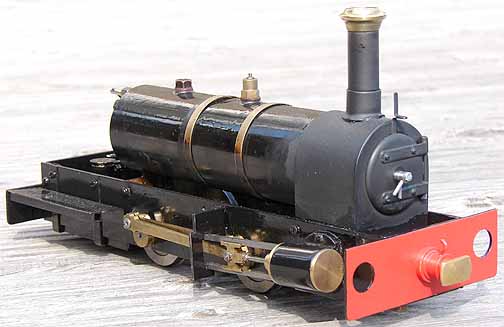

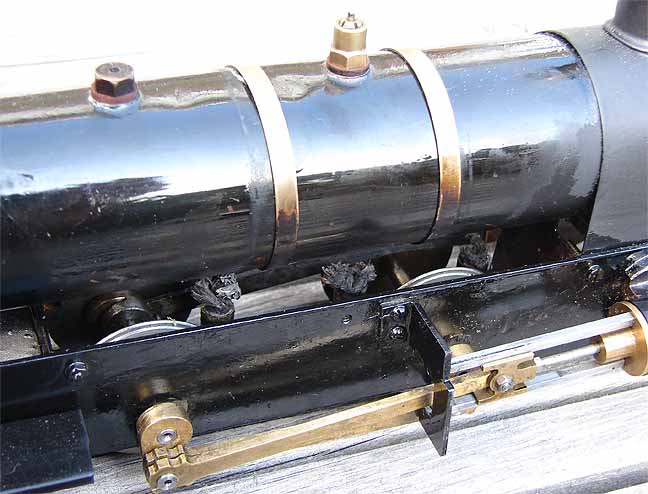
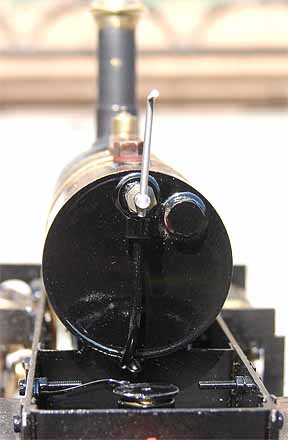
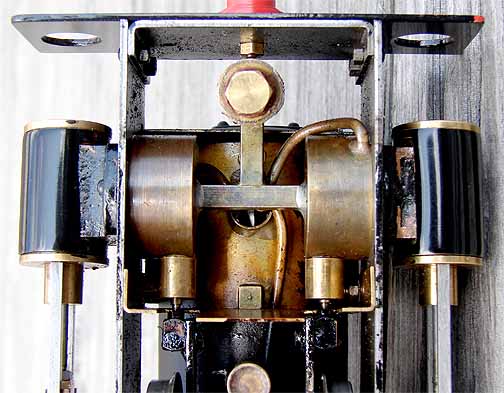
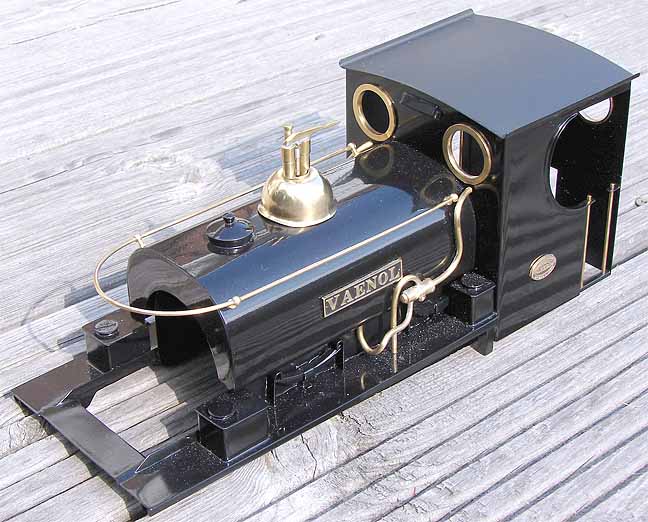
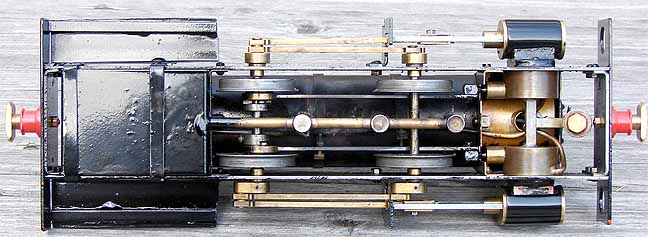
Back to Sidestreet Bannerworks
Click here to find out how your engine can be featured!
This page and its contents
Copyright Sidestreet Bannerworks, 2010